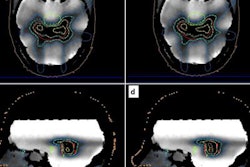Dear AuntMinnieEurope Member,
When a radiology department has a mobile MRI scanner onsite that's operated by an outside contractor, the relationship between the two parties can be a gray area. Uncertainty may surround the specific responsibilities of each group, particularly with regard to staff training, and the national regulations may be unclear too. If things go seriously wrong, where does the blame lie?
The question of responsibility has arisen in the case of October's MRI accident in Swedish Lapland. It will be fascinating to see how the police investigation handles this matter. Find out more in the MRI Community.
Dutch researchers have investigated the impact of quality assurance on radiographer reporting, looking closely at nearly half a million examinations from the national breast cancer screening program. They published their findings in Radiology on 7 January. Go to the Women's Imaging Community.
Dr. Mukund Joshi (1942 to 2020) was a charming, modest man and a dedicated teacher. I saw this firsthand at the 1998 International Congress of Radiology in Delhi, India, where he spent the entire conference giving lectures on ultrasound and chatting at length with his huge band of admirers. Nothing pleased him more than passing on his clinical knowledge and inspiring others. Don't miss this tribute to one of radiology's gentlemen.
Also in our Ultrasound Community you can read a fascinating report about a surprise medical discovery by an astronaut. Bizarre things can happen in outer space ...
German investigators have found that dual-energy CT can boost sensitivity and detection in cases of acute pulmonary embolism, particularly for endoluminal clots in small segmental or subsegmental lung vessels. A team from Würzburg has shared its experiences and two sets of striking clinical images in an article posted in the CT Community.
Finally, a group from Athens has elaborated on its use of MR-guided radiotherapy to facilitate the direct visualization of structures of interest in the treatment position, with high soft-tissue contrast. This opens up the possibility of adaptive replanning to compensate for changes in the patient's anatomy or position.




















